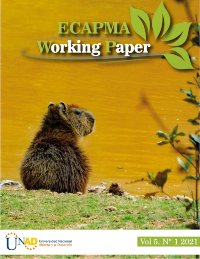Production of bovine embryos from the invitro Colombia laboratory during 2019
In vitro fertilization emerged 40 years ago; it is one of the reproductive biotechnologies that are currently being applied in the country, producing embryos commercially on a large scale in cattle, which increases the use of the genetic potential of the female.
Knowledge gap: Colombia does not constantly present production data since commercial laboratories do not publish their results, avoiding a positioning of the country in the world map of reproductive biotechnology applied to commercial production.
Purpose: The intention of this study is to make an approach to the average production of a laboratory dedicated to the production of bovine in vitro embryos (IVEP) in Colombia.
Methodology: The embryo production of INVITRO COLOMBIA SAS laboratory was evaluated for the year 2019, in terms of IVEP, taking into account techniques such as follicular aspiration (OPU), which can be performed by the presence of follicular waves of the bovine estrous cycle which allow the collection of oocytes throughout their productive life, in vitro maturation (IVM), in vitro fertilization (IVF) and in vitro culture (IVC), 8 days after follicular aspiration the embryos produced are delivered. Variables corresponding to production and racial and zootechnical preference in the applicability of the technique by the producer were evaluated. Descriptive statistics were used for the analysis by obtaining averages.
Results and conclusions: The production of oocytes per donor is 24 per session, the average embryo production was 4. The obtaining of viable oocytes corresponds to 83.7%, the division of zygotes was 66.5% and the production of embryos from viable oocytes was 19.3%. Regarding the zootechnical vocation of the animals submitted to the technique, 76.4% corresponded to dairy cattle and 23.6% to beef cattle. The breed in which the technique is most used is the Gyr breed, especially for crossbreeding with European breeds for the production of F1 adapted for dairy cattle in the tropics, as well as the Guzerat and Brahman.






